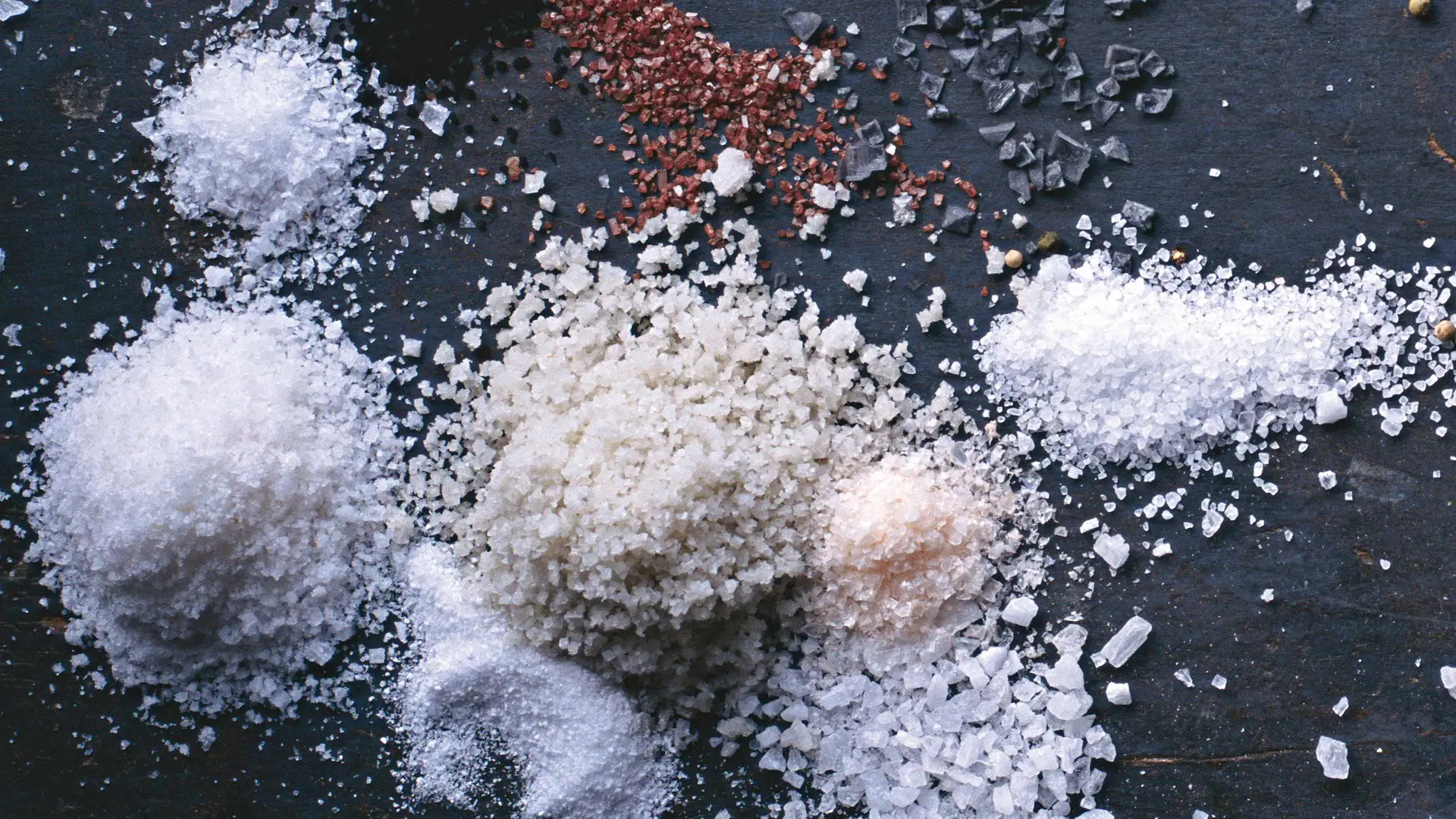Managing Electrolytes for Optimal Bodily Functions
For the body to function at its utmost peak performance, ALL electrolytes need to be consumed in the correct ratio’s & amounts, consistently on a daily basis. You’re constantly losing electrolytes through sweat or in urine and need to replenish them to keep the body’s electrolyte content stable!
You can find the iHerb Links for Recommended Supplements at the bottom of each Section.
iHerb 5% Discount Code: DTV967
Affiliate Link: https://www.iherb.com/?rcode=DTV967
Watch or Listen to this Articles YouTube Video
Water & Hydration
First and foremost; it’s very important to understand that water plays a huge role in electrolyte management as it carries them alongside other nutrients through the body. There isn’t an easy formula to assess water intake; it can be anywhere between 300-1,000ml per 10kg of body weight, depending on how much the person sweats and the amount of activity they do daily. Coach Steve trains around 1,5 hours per day, 5 days per week, and performs daily 30min moderate-intensity fasted cardio sessions upon waking. Coach Steve also trains in a gym without air-conditioning, in a country that has 70-80% humidity and averages around 31 Celsius / 87 Fahrenheit. Needless to say; Coach Steve sweats buckets and loses a lot of electrolytes during his workouts!
Coach Steve drinks between 8-12 liters of water every day, depending on the body part trained and other activities during the day. Coach Steve’s weight fluctuates between 100kg at the end of a cutting phase or after fasting for a few days, to about 115-117kg at the peak of offseason.
An easy formula for bodybuilders, strength athletes or fitness enthusiasts that train and live under similar circumstances is 1 Liter water per 10kg or 22-25lbs of body weight!
Keep in mind that water intake varies highly from person to person. The main take-away of water intake is that it needs to be consistent throughout the day, so your kidneys can maintain a constant filtration rate. If you do not drink adequate amounts of water daily, the Pituitary Gland secretes Vasopressin, which causes the kidneys to conserve water and essentially stop the detoxification of the body!
Sodium (Natrium)
Contrary to popular belief, Sodium is required by the body in relatively large amounts. Most of the body’s Sodium is located in the blood and the fluid within and surrounding cells. Sodium regulates the fluids of the body and keeps them in homeostatic balance. It also plays a crucial role in healthy nerve and muscle function.
The body mostly obtains Sodium through food and loses it primarily in sweat and urine. However, it’s not easy to get adequate amounts of Sodium from your diet without the use of condiments, as unprocessed foods contain minimal amounts of Sodium. Unless you’re willing to compose your diet with a lot of pickles, eggs, shrimp & scallops, which will inadvertently increase dietary Cholesterol intake as well!
Healthy kidneys maintain a consistent sodium balance in the body by adjusting the amount that’s excreted in the urine as a response to the hormone Aldosterone. The body continually monitors blood volume and sodium concentration; consuming too little Sodium will signal the body to increase Aldosterone levels and prevent further Sodium loss. Elevated Aldosterone concentrations instruct the kidney to retain Sodium but continue to excrete Potassium to maintain blood volume.
When blood volume or Sodium concentration becomes too high, the heart, blood vessels, kidneys, and adrenal glands inhibit further Aldosterone release, which allows the kidneys to increase Sodium excretion, thus returning blood volume to baseline. This is the main reason why patients admitted to the hospital are placed on a Saline drip to prevent Aldosterone levels from rising severely and cause edema around the heart & organs, which can complicate medical conditions further!
Bodybuilders, strength athletes, and fitness enthusiasts should down-regulate Aldosterone levels by consuming Sodium in a slight surplus compared to what’s actually required. This means you will never hold excess Sodium from a cheat meal, as your body is continuously flushing it out through urine. In many cases, Sodium intake on a cheat or refeed day is less compared to weekdays, where Sodium intake is carefully monitored. Resulting in low Aldosterone concentrations throughout the week, which prevents unnecessary Sodium retention after a refeed or cheat meal.
Higher blood volume from consistent Sodium intake also means optimized nutrient delivery, needed for recovery, anabolism, fat loss, hormone production, etc. Depending on which Performance Enhancing Drugs (PED)s used; Cialis, Telmisartan, Lisinopril, or Nebivolol help control the additional blood volume and manage blood pressure effectively. These medications lower blood pressure by relaxing the arteries & veins, allowing more blood volume for optimal nutrient delivery to tissues all over the body!
The easiest way to get enough Sodium in daily is by using salt, preferably; Himalaya Pink Salt mixed with Iodized Table Salt in a 1:1 Ratio. Himalaya Pink Salt contains very little Iodine; whatever amount it does contain is most likely oxidized by prolonged exposure to the air. Himalaya Pink Salt is mined in Pakistan, crushed, packaged, and shipped, without any addition of Iodine to support healthy thyroid function. If you’re not consuming kelp, seaweed, egg yolks, shrimp, dairy products, or cranberry (juice) on a daily basis, you’re probably not getting sufficient amounts of Iodine. Mix Himalaya Pink Salt with Iodized Table Salt to get adequate amounts of Iodine. Keep in mind that this mixture will also increase the Sodium content and reduce the other 88 trace minerals in the condiment. Below is a table of mineral-content, per serving of Himalaya Pink Salt mixed with Iodized Table Salt in a 1:1 Ratio:
| Sodium (mg) | Potassium (mg) | Magnesium (mg) | Calcium (mg) | Chloride (mg) | Iodine (mcg) | |
| Himalaya Pink Salt (1g) | 382.61 | 3.50 | 0.16 | 2.03 | 590.00 | |
| Iodized Table Salt (1g) | 393.37 | 0.01 | 606.60 | 45.00 | ||
| HPS:ITS Mixed 1:1 (1g) | 387.00 | 1.75 | 0.08 | 2.03 | 598.30 | 22.50 |
| Quarter Teaspoon Mixed (1.5g) | 582.00 | 2.64 | 0.12 | 3.04 | 897.45 | 33.75 |
| Half Teaspoon Mixed (3g) | 1,164.00 | 5.27 | 0.24 | 6.08 | 1,794.90 | 67.50 |
| Full Teaspoon Mixed (6g) | 2,328.00 | 10.54 | 0.48 | 12.15 | 3,589.80 | 135.00 |
Sunfood Fine Himalayan Crystal Salt: https://www.iherb.com/pr/Sunfood-Fine-Himalayan-Crystal-Salt-1-lb-454-g/50415
Potassium (Kalium)
Most of the body’s Potassium is located inside the cells. Potassium is necessary for the normal functioning of cells, nerves, and muscles. The body must maintain the Potassium level in blood within a narrow range. Hyperkalemia is diagnosed as serum Potassium concentrations that are too high, while hypokalemia sees concentrations that are too low. Both conditions can result in serious consequences; muscle cramps & spasms, abnormal heart rhythm, even cardiac arrest. The body can use a vast reservoir of Potassium stored within cells to maintain a constant level of Potassium in the bloodstream; most of this Potassium reservoir is bound to carbohydrates in the form of intramuscular glycogen stores. Needless to say; these stores deplete while following a Ketogenic or Carnivore diet, although the liver also stores Potassium with glycogen, which is often sufficient to maintain serum Potassium concentrations.
It’s relatively easy to get adequate amounts of Potassium from most protein, carbs & fat sources as they all contain Potassium to a certain extend. Fruits, potatoes, avocado, spinach, beans, and coconut water are all high in Potassium. In order to store carbohydrates as glycogen within muscle or liver cells, around 10mg Potassium is utilized per 1g carbohydrates. When aiming to hold the maximum amount of glycogen possible during a peaking protocol before a contest or photoshoot, Potassium is often consumed in a surplus to prevent leaching from other surrounding tissues. This helps to maintain the overall Potassium balance between skeletal muscle and other cells of the body.
Sweet potatoes already contain a surplus in Potassium at almost 20mg per 1g of carbohydrates. On the opposite side, white rice only contains 1mg Potassium per 1g of carbs. When white rice is the predominant carbohydrate source during the offseason, it’s advised to supplement additional Potassium for adequate carbohydrate metabolism and glycogen storage.
Additional Potassium could come from spinach, where 150g spinach would cover 100g white rice and make up for the difference. 150g spinach contains around 840mg Potassium, which is plenty to cover the 6g carbs from 150g spinach and 80g carbs from 100g rice, providing a total of 926mg Potassium, well over 10mg potassium per 1g carbs contained within that meal!
Those who want to make Potassium intake even easier, instead of Iodized Table Salt, consider mixing Iodized Low Sodium Salt with Himalaya Pink Salt. in a 1:1 Ratio. You can also mix Iodized Table Salt with Nu-Salt in a 3:1 Ratio, as Nu-Salt doesn’t contain any additional Iodine. You’ll have to ensure you acquire it with Iodized Table Salt; the Iodine within Himalaya Pink Salt is mostly oxidized and not bioavailable!
It’s not required to increase your Potassium intake with these salt formulations dramatically. Coach Steve prefers an Iodized, 60% Potassium Chloride & 40% Sodium Chloride salt formula, usually found in the Diabetes or diet section of most grocery stores. Below is a table of mineral-content, per serving of Himalaya Pink Salt mixed with Iodized Low Sodium Salt in a 1:1 Ratio:
| Sodium (mg) | Potassium (mg) | Magnesium (mg) | Calcium (mg) | Chloride (mg) | Iodine (mcg) | |
| Himalaya Pink Salt (1g) | 382.61 | 3.50 | 0.16 | 2.03 | 590.00 | |
| Iodized Low Sodium Salt (1g) | 157.35 | 314.67 | 45.00 | |||
| HPS:ILSS Mixed 1:1 (1g) | 269.98 | 159.09 | 0.08 | 2.03 | 558.99 | 22.50 |
| Quarter Teaspoon Mixed (1.5g) | 404.94 | 238.63 | 0.12 | 3.04 | 838.49 | 33.75 |
| Half Teaspoon Mixed (3g) | 809.94 | 477.26 | 0.24 | 6.08 | 1676.97 | 67.50 |
| Full Teaspoon Mixed (6g) | 1619.87 | 954.51 | 0.48 | 12.15 | 3353.94 | 135.00 |
Below is a table of mineral-content, per serving of Iodized Table Salt with Nu-Salt in a 3:1 Ratio:
| Sodium (mg) | Potassium (mg) | Magnesium (mg) | Calcium (mg) | Chloride (mg) | Iodine (mcg) | |
| Iodized Table Salt (1g) | 393.37 | 0.01 | 606.60 | 45.00 | ||
| Nu-Salt (1g) | 530.00 | 470.00 | ||||
| ITS:NS Mixed 3:1 (1g) | 295.03 | 132.51 | 572.45 | 33.75 | ||
| Quarter Teaspoon Mixed (1.5g) | 442.54 | 198.77 | 585.68 | 50.63 | ||
| Half Teaspoon Mixed (3g) | 885.08 | 397.53 | 1,717.35 | 101.25 | ||
| Full Teaspoon Mixed (6g) | 1,770.17 | 795.06 | 3,434.70 | 202.50 |
KAL Potassium Chloride: https://www.iherb.com/pr/KAL-Potassium-99-Chloride-99-mg-100-Tablets/23947
NuSalt: http://www.nusalt.com/
Magnesium
The majority of Magnesium in your body is bound to proteins or stored in the bones of your skeleton. About half of the body’s Magnesium is contained within bones or teeth; the other half is utilized in nerve and muscle function. Many enzymes in the body depend on Magnesium to function correctly, it also plays an essential role in the metabolism of Calcium and Potassium.
The amount of Magnesium your body absorbs highly depends on the amount it needs. Otherwise, Magnesium merely remains in the intestinal tract and acts as a mild laxative. An easy way to assess how much milligrams of Magnesium your body requires is by slowly increasing supplemental forms of Magnesium until you get loose stool or diarrhea. When that happens, you simply reduce the dose to the previous increment and continue on the optimal and absorbable amount of dietary & supplemental Magnesium you can have every day!
Magnesium is very beneficial for healthy blood pressure and intense hypertrophy training as it helps to relax the muscles after a hard contraction. Sufficient Magnesium intake helps lower the weight under tension, which is a large part of the hypertrophy signal for muscle growth! Bodybuilders, strength athletes, and fitness enthusiasts utilize a lot of Magnesium this way as the negative portion of the repetition should always be performed slower for additional Time Under Tension (TUT), compared to the explosive positive portion, where Calcium is used!
It’s relatively easy to get adequate amounts of Magnesium from your diet as contained within most popular food sources, including; fruits, vegetables, nuts, quinoa, oatmeal, and fish. These foods are commonly consumed by individuals who eat for performance. In order to supply more Magnesium for a better controlled eccentric contraction, consider adding Magnesium supplements. Magnesium Citrate, Glycinate, Bisglycinate are the most bioavailable forms. Coach Steve takes 200mg Magnesium Glycinate of Bisglycinate with each meal, up to 1,200mg supplemental Magnesium per day on top of 1,000mg dietary Magnesium.
KAL Magnesium Glycinate: https://www.iherb.com/pr/KAL-Magnesium-Glycinate-400-400-mg-180-Tablets/18943
Lake Avenue Magnesium BisGlycinate: https://www.iherb.com/pr/Lake-Avenue-Nutrition-Magnesium-Bisglycinate-200-mg-Per-Serving-240-Tablets/96279
Now Foods Magnesium Citrate: https://www.iherb.com/pr/Now-Foods-Magnesium-Citrate-240-Veg-Capsules/78201
Calcium
About 99% of the body’s Calcium is stored within the skeleton. Skeletal muscle cells in particular also contain Calcium, where it is used during muscular contractions. Blood also has trace amounts of Calcium, where it contributes to vasodilation or vasoconstriction in conjunction with Magnesium. Calcium also regulates the blood’s acidity; high protein diets make the blood slightly acidic, which increases Calcium concentrations as a compensatory mechanism. Similar to Magnesium, Calcium is essential for the formation of bone and teeth, proper muscle contraction, and normal functioning of the heart.
The body precisely controls the amount of Calcium within bones, cells, and the bloodstream; it moves Calcium from bones into the blood as needed to regulate its pH balance. Athletes who don’t consume enough Calcium mobilize it from bones, which might lead to osteoporosis.
Parathyroid hormone secretes in response to serum Calcium concentrations; as Calcium levels in the bloodstream decrease, this parathyroid hormone stimulates bones to release Calcium and instructs the kidneys to excrete less Calcium in the urine. At the same time, parathyroid hormone also stimulates the digestive tract to absorb more Calcium.
Calcium is used in the concentric portion of muscular contraction by binding to the Troponin-C and Myosin proteins. This process changes the shape of these proteins, which generates a contraction. Magnesium competes with Calcium for these same binding locations and restores the shape of these proteins to relax the muscle!
Since the body carefully regulates serum Calcium concentrations by storing it in bones or allowing it to pass through skeletal muscle tissue freely, it’s advised not to consume too much dietary Calcium in a single sitting. If you require supplemental Calcium, consider using timed-release formulations coming from Coral or Shell Fish sources.
NOW Foods Coral Calcium: https://www.iherb.com/pr/Now-Foods-Coral-Calcium-Plus-250-Veg-Capsules/4257
Electrolyte Ratios
Before we discuss the ideal electrolyte ratio’s, let’s first look at the established Dietary Reference Intakes (DRI’S) and Upper Limits (ULs) to get an idea of what’s generally accepted as healthy electrolyte intake. In this article, we’ll use the DRI’s & ULs for men between 19 to 50 years of age:
• Water: DRI; 3,700ml per day & UL: not established.
• Sodium (Natrium): DRI; 1,500mg per day & UL; 2,300mg per day.
• Potassium (Kalium): DRI; 4,700mg per day & UL; not established.
• Magnesium: DRI; 420mg per day & UL; 350mg per day, which is lower than the DRI per day…
• Calcium: DRI; 1,000mg per day & UL: 2,500mg per day.
SOURCE: https://ods.od.nih.gov/health_information/dietary_reference_intakes.aspx
PS: THANK YOU! Food and Nutrition Board, Institute of Medicine for the Magnesium confusion…
Below are the electrolyte ratios, which Coach Steve has used successfully on himself and many of his clients. Please keep in mind that these ratios are merely an indication of productive electrolyte intake. You’ll have to make some adjustments based on your own needs, dietary intake, daily activity levels, and level of development:
• Water: 500-1,000ml per 10kg or 22-25lbs of body weight.
• Sodium (Natrium): 500mg per 1 liter water consumed per day.
• Potassium (Kalium): 500mg per 10kg or 22-25lbs of body weight + 10mg per 1g carbohydrates consumed per day.
• Magnesium: 100mg per 10kg or 22-25lbs of body weight + 10-15mg per minute spend training (on average).
• Calcium: 100mg per 10kg or 22-25lbs of body weight + 5mg per minute spend training (on average).
Following these generally recommended guidelines for electrolyte intake, we can determine the ideal electrolyte ratios for carbohydrate diets or ketogenic diets in the breakdown below:
• Carbohydrates: 2-2.5 Sodium : 5-5.5 Potassium : 1.5 Magnesium : 1 Calcium
• Ketogenic: 2.5-3 Sodium : 4-4.5 Potassium : 2 Magnesium : 1-1.5 Calcium
Based on these generally recommended guidelines and ratios, a 100kg bodybuilder spending 90-100 minutes in the gym on average per session, 5x per week, and performs 30min cardio daily, which is about 101 minutes average gym-time per day. Eats a ketogenic diet with around 50g carbs, 150g fat, and 350g protein per day, needs the following electrolytes on a daily basis:
• Water: around 10 liters
• Sodium (Natrium): 5,000mg
• Potassium (Kalium): 4,500-8,000mg
• Magnesium: 2,015-2,522mg
• Calcium: 1,505mg
• Ratio: 2.9 Sodium : 4.7 Potassium : 1.5 Magnesium : 0.9 Calcium
Let’s say you’re a moderately active fitness enthusiast of 80kg that also spends 90 minutes in the gym on average per session, 5x per week, and eats around 250g carbs, 80g fats, and 250g protein per day, then consider the following electrolyte amounts and ratio:
• Water: 5 liters
• Sodium (Natrium): 2,500mg
• Potassium (Kalium): 6,500mg
• Magnesium: 1,443-1,764mg
• Calcium: 1,121mg
• Ratio: 2.1 Sodium : 5.5 Potassium : 1.5 Magnesium : 1 Calcium
Remember that these generally recommended electrolyte intakes and ratios still need careful adjustments to make it personalized and work for your unique situation!








